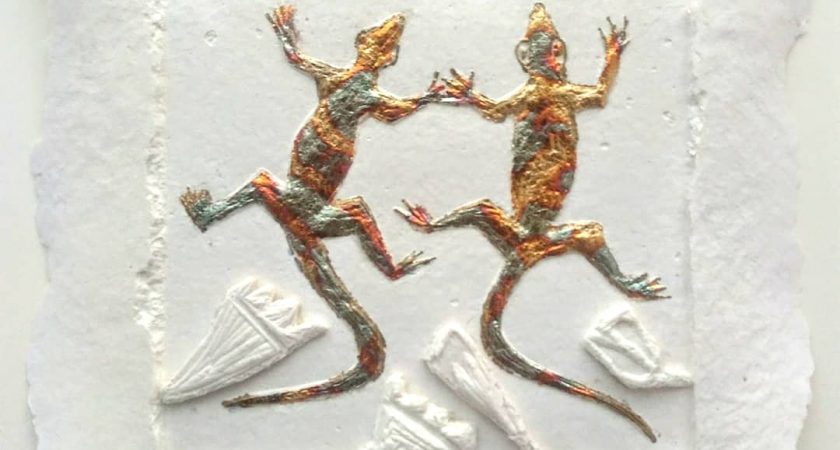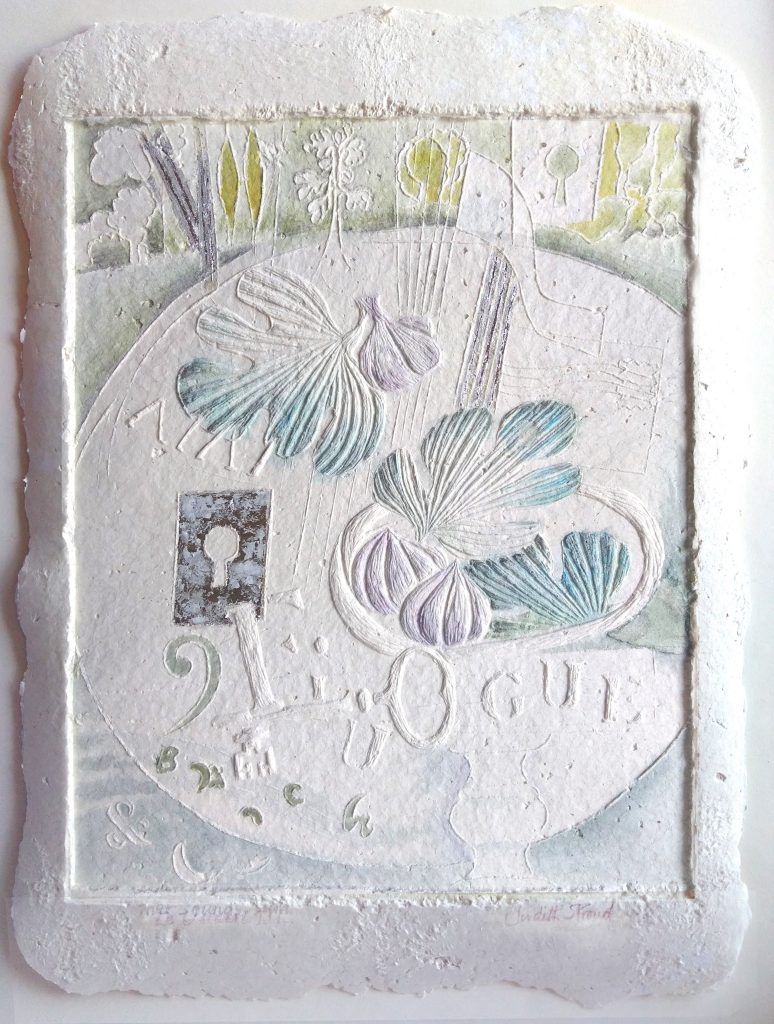Judith Stroud reveals how her love of making and materials lies behind her inventive printmaking, and shares insight into her process and boundary-pushing techniques.
We are delighted to talk to Judith Stroud whose solo exhibition features throughout February on our dedicated Online Exhibition website.
Judith is a long-standing member of SPW whose work has been exhibited widely and appears in many public and private collections. In this exhibition, we are featuring work across a wide range of techniques that demonstrates the passion and inventiveness with which Judith approaches her printmaking.
Judith graduated in Fine Art at the West of England College of Art, Bristol and although she retains her love of watercolour, and may incorporate it in her prints, it is printmaking that has offered her the “element of making” that is intrinsic to her art.
Judith has a unique and refreshing approach to her printmaking. She doesn’t limit herself to one technique or tradition, rather she considers how she can make a technique work for her. If it doesn’t offer what she has in mind, she has the confidence to experiment and find an approach or process which serves her purpose. She might combine a number of processes, use materials in a different way, push the boundaries of a traditional technique, embrace new technical developments or even invent a new printmaking technique.
At the start of the pandemic, Judith was working on a series of Paper Sculpture Relief prints. (This work was paused when planned exhibitions had to be postponed). She had been revisiting the collagraph process, a technique used previously, but wanted to explore more textural ways of working with paper. In her search for a printmaking method of paper casting, Judith has created a new process. She uses an image cut into lino as a mould for pulped paper to create a bas-relief sculpture (a textured, embossed print) which she then hand-paints with watercolours.
Another invented method that Judith uses is her ‘Jigsaw Linocut’ process. Judith was working on a series of prints on succulents and wanted to find a better way of matching their “vibrancy and brilliance of colour” than she felt was offered by most other methods of printing linocut. Recalling how she had previously corrected a mistake in a piece of work by cutting out a detailed shape from vinyl and fitting it into the area to be corrected, the idea formed for her jigsaw process.
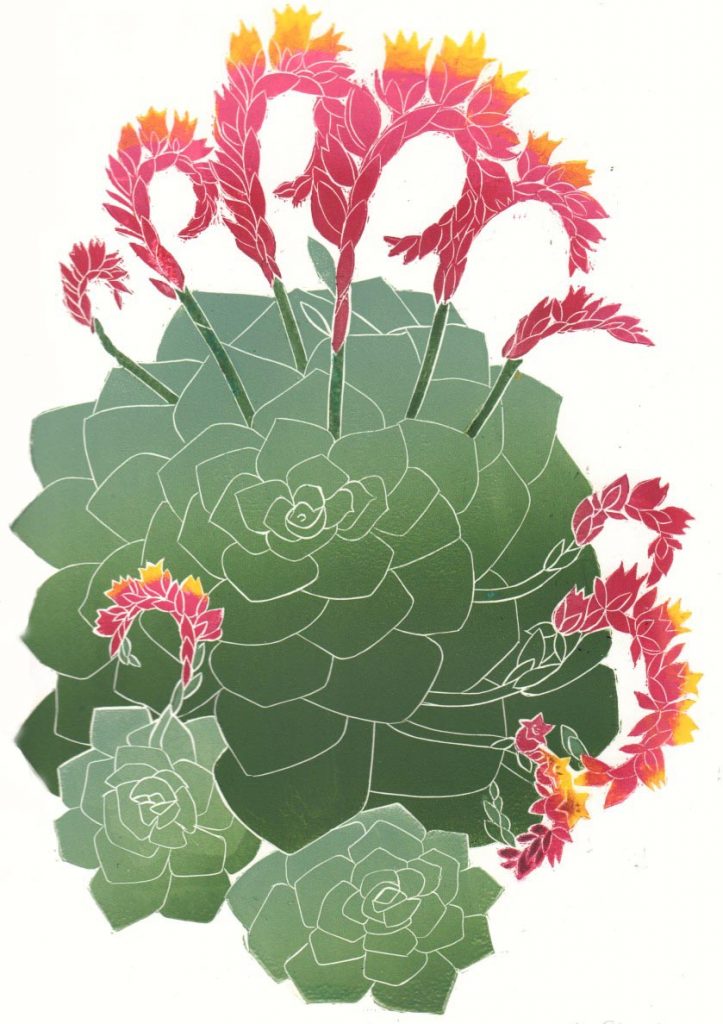
‘Echeveria’, linocut jigsaw, approx image size 43 cm x 30cm 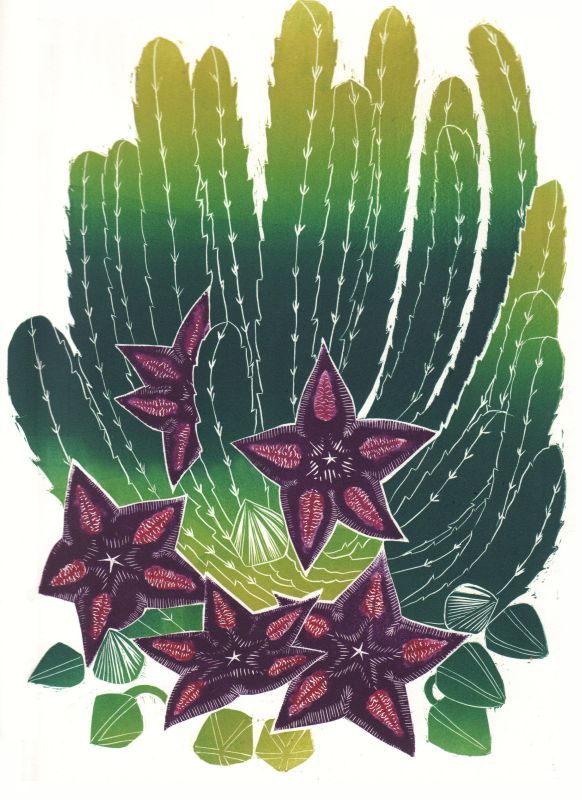
Judith Stroud Stapelia linocut 43x30cm
By having lots of small blocks which can be inked up separately and then fitted back together, Judith realized that this gave her freedom to use many more colours and colour variations, delivering the wide range of colour and tone that she was aiming to achieve. Judith always uses “graduated colour rolls, sometimes called rainbow rolls, so the colour can change from light to dark, or yellow to orange, within that one shape”.
Judith’s knowledge of, and enthusiasm for, exploring materials is evident. She was quick to “try out for herself” the emerging digital processes which she combines with more traditional techniques. Judith prefers working with the modern Japanese vinyl because she can achieve finer shapes and model more with it, and she pulps her own leftover paper for her paper sculptures.
Her love of watercolours lies partly behind the idea of the paper sculptures which she hand-paints with vintage artist watercolour paints inherited when she was 11 years old. She uses the same watercolours to make the rice-paste colours for her traditional Japanese woodblock prints.
Judith often works on a series of prints with a linked theme such as ‘Wildflowers and Landscapes of Wales’ and ‘The Physicians of Myddfai – Meddygon Myddfai’. She finds that when she is working on an idea, “one piece isn’t enough” and she will continue with the series “until I have said all I have to say.”
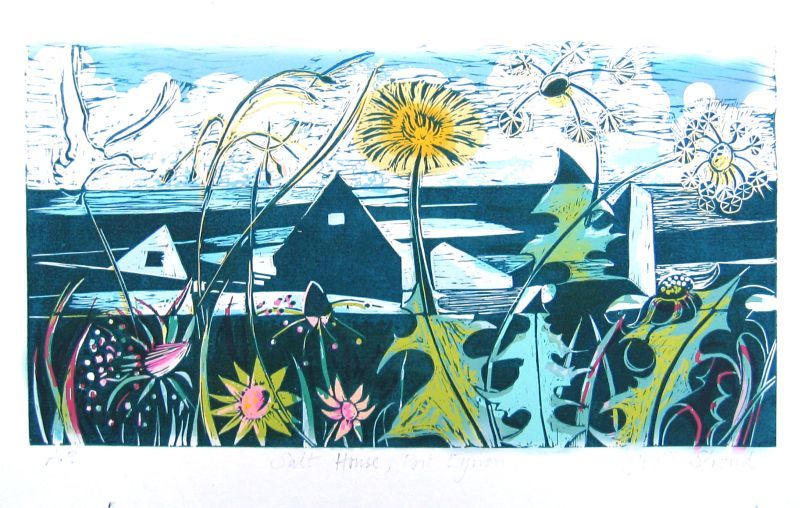
Judith Stroud Salt House Port Eynon linocut 28 x 16cm 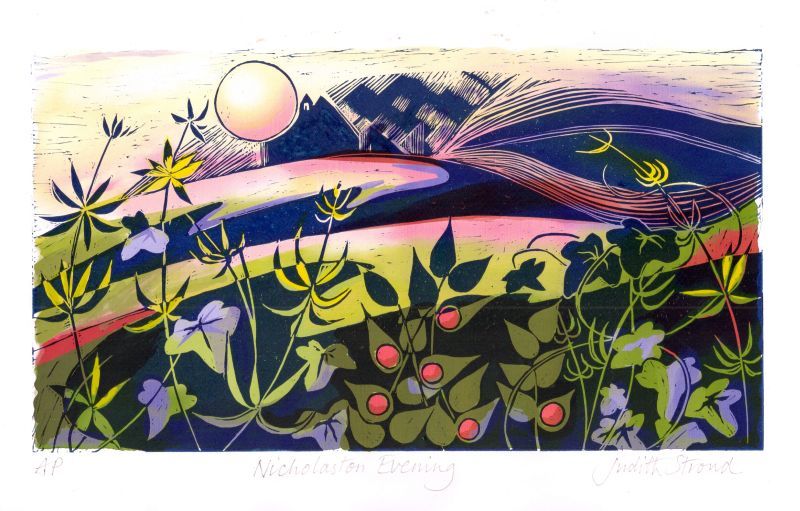
Judith Stroud Nicholaston Evening linocut 28 x 16cm
Wales – both its natural world and its urban environment – provide Judith with a rich artistic seam. She is often playful in her approach to the subject matter too which can be seen not only in many of her images but also in the title she chooses.
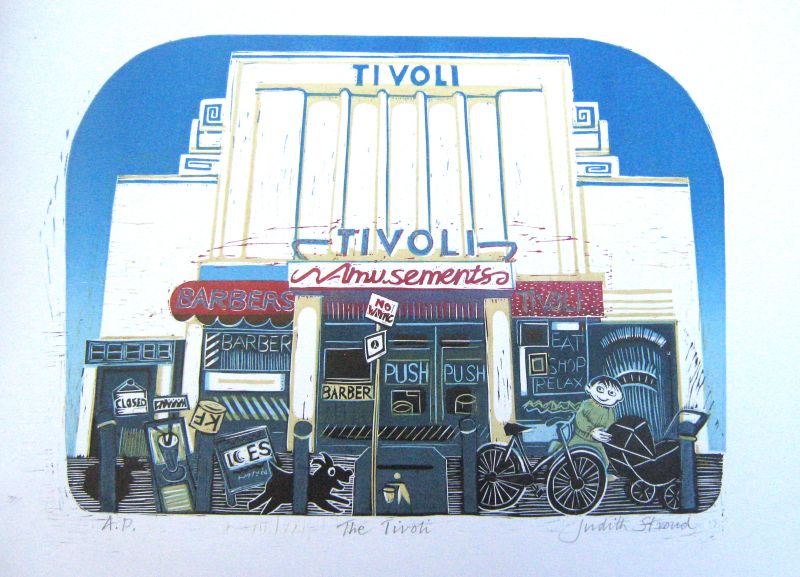
Judith Stroud The Tivoli linocut 28x38cm 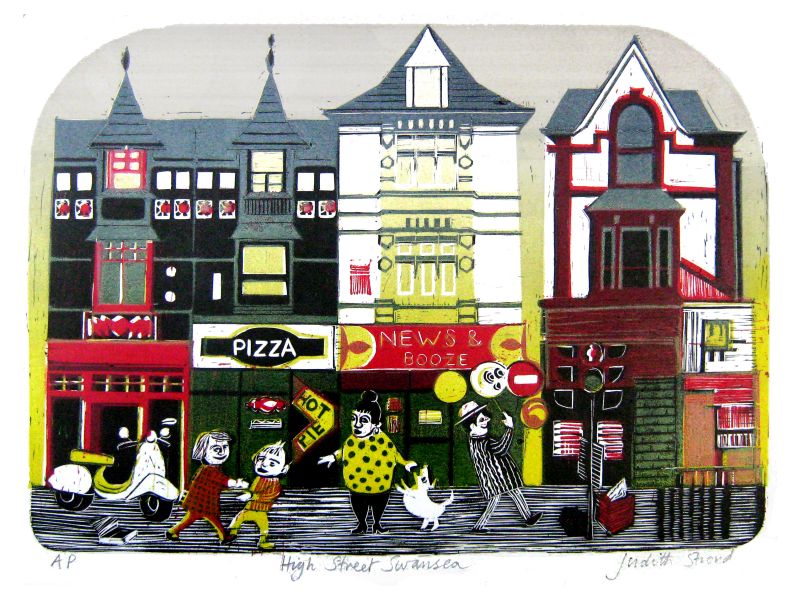
Judith Stroud High Street Swansea linocut 28x38cm
In fact, Judith revealed that the title is often the starting point when she is working on an idea. Once she has the idea in mind, she will actively draw and take photos of the elements of the image she needs, making “notes to self” in her notebooks as she works.
Ideas are not in short supply for Judith. She has filled countless notebooks with potential new work, but it is the ideas which are “obsessive”, that feel most pressing which she takes forward.
During the pandemic, Judith has been enjoying working again on urban themes to do with the built environment in the city and “its ongoing and endless revision by the local authorities” – a subject all too familiar to Swansea residents.
She is also planning to continue, and develop, her use of linocut as a monoprint. By printing the cut blocks in varied ways with different arrangements and colours, and perhaps also introducing freehand drawing and painting, each piece will be unique. “This will allow me greater freedom whilst keeping the particular printmaking qualities I enjoy.”
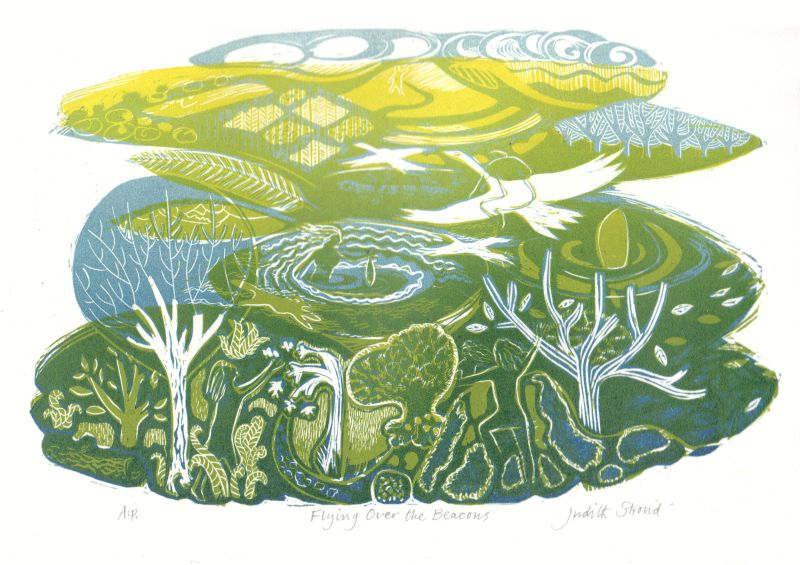
Judith Stroud Flying over the Beacons linocut 25x40cm 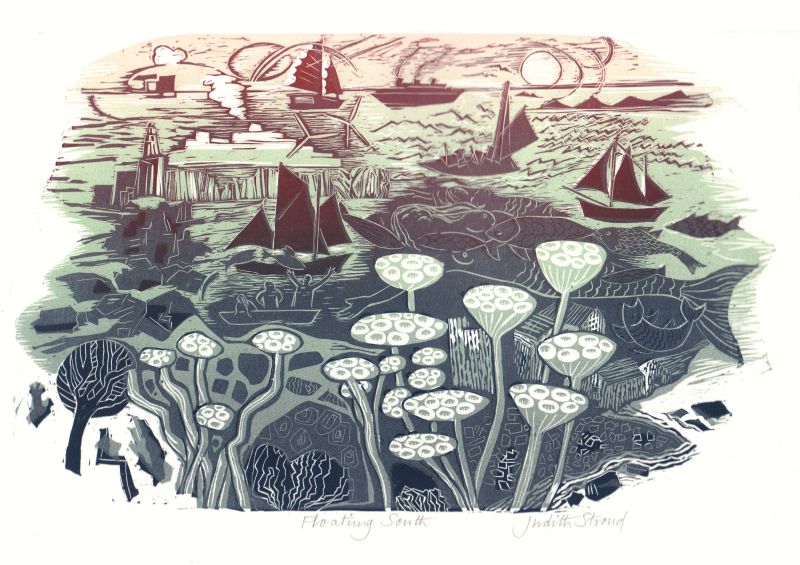
Judith Stroud Floating South linocut 27x40cm
“There are no limits to the possibilities with printmaking”, Judith says. Reflecting further on her continual exploration of process and materials, she feels that it is the constant renewal, the “repeated fresh starts” which offer her a way to keep enthused and impassioned, and which fulfils that fundamental urge to make.
To view more of Judith’s work or to make any purchase enquiries, please contact her via her website.
Sarah Jackman | writer

